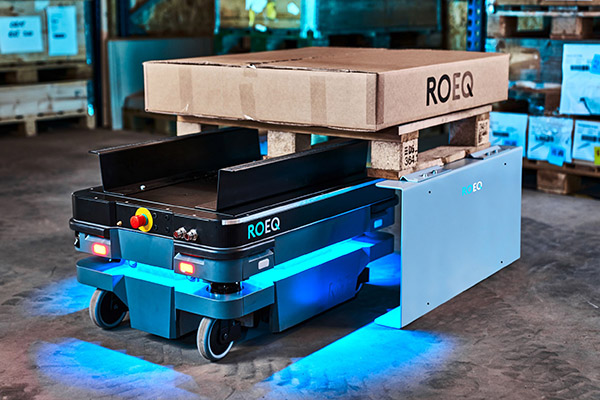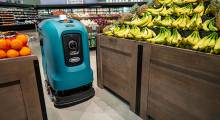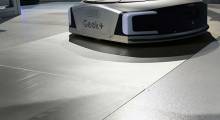The ability for autonomous mobile robots, or AMRs, to work safely alongside people is key to their ongoing success, according to ROEQ. But safety in these applications is about much more than the navigation of the robot itself through your facility.
Mobile robotic equipment (MRE) – including the lifts, carts, and top rollers that interface with conveyors and other surrounding equipment – are critical elements that allow the mobile robot to perform its tasks. And workers who load and unload material may actually have more interaction with those top modules than the AMR itself.
How do safety standards apply to top modules?
Around the world, standards organizations and regional regulatory bodies have developed guidelines and regulations that provide frameworks for the safety of machinery and related products. One example is the European Machinery Directive (MD), whose requirements manufacturers, importers, and distributors must meet.
The directive also says products must carry the CE mark, which indicates that the machinery complies with EU safety standards. To meet such standards, AMRs include sensors and other built-in safety features that allow the robots to navigate collaboratively around human co-workers by slowing down, changing direction, or stopping to avoid collision.
However, confusion often arises around MRE and safety standards because this equipment is not part of the robot itself, but is a critical element of the robotic application. This is a complex topic that can’t be covered in a single blog post.
But we regularly hear questions about MRE safety that illustrate common misconceptions. Let's examine a few of them, including why some questions aren’t actually applicable, and what you should be asking instead.
What is the safety level of your top modules?
This common question is well-meaning but misguided, as there are no defined safety levels for AMR top modules.
The question may be referring to performance levels, which standards organizations have established to define the reliability of a safety function designed to mitigate an identified risk, based on the potential exposure to and severity of injury. As top modules aren’t considered safety functions, performance levels aren’t applicable, but top modules still need safety features.
One common choice is between standardized top modules from an established manufacturer versus do-it-yourself (DIY) top modules built in-house or by a local integrator.
Unlike DIY equipment, standardized top modules, such as those from ROEQ, incorporate safety as a critical element of the R&D process. That includes understanding and complying with all relevant standards.
For instance, ROEQ uses safety programmable logic controllers (PLCs) and safety-rated sensors to meet performance levels for safety functions that we build in to mitigate identified hazards.
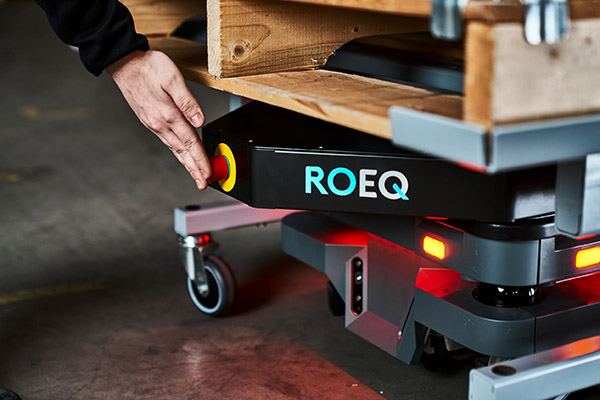
Questions you should ask your MRE manufacturer:
- What safety features and functions are built into the top module you’re recommending for my application?
- What is the performance level of the safety function that hinders pallets from being unloaded accidentally?
Are your top modules CE-marked?
While robotics supplies are not required to comply with EU laws or standards when outside the EU, the CE mark provides a strong and proven framework for overall safety, so it is often used along with amendments that address local requirements. The CE mark applies solely to “completed machinery” and not to single elements of it.
Since top modules and related MRE require a robot to function and cannot operate independently, they are not considered to be “completed machinery.” That means that top modules themselves cannot be CE-marked.
If your application is installed in the EU, it requires a CE mark, and the process is managed by your integrator or in-house integration team. The CE mark builds on a risk assessment and must contain a technical dossier showing that the installation complies with standards, including all equipment, training manuals, and safety signage.
While top modules alone can’t be CE-marked, commercial modules from an established manufacturer can help ease the certification process. For instance, ROEQ provides the required Declaration of Incorporation (DoI) and instruction manual for the integrator to build on when doing the risk assessment. This saves time and ensures consistency for integrators and end users.
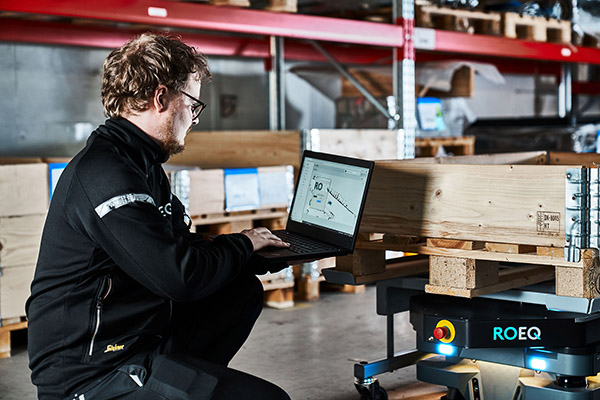
Questions you should ask your MRE manufacturer:
- Is this top module built on standards outlined in the Machine Directive?
- Did you perform a risk analysis when designing this top module?
Can you make a DoC on your top module?
The simple answer is no. The Declaration of Conformity (DoC) is a legal document confirming that the machinery meets the requirements of the Machinery Directive.
However, the DoC is based on two items from the equipment manufacturer: The Declaration of Incorporation (DoI) and the instruction manual for the equipment. The DoI states which parts of the Machine Directive are relevant for the top module, along with information about the manufacturer. The instruction manual describes the equipment’s safety functions and residual risks.
Proven and tested commercial top modules, such as those from ROEQ, come with everything the integrator needs to create the DoC. This makes it easier for the integrator to do the full risk assessment without having to develop all the material from scratch.
And both integrators and end users have the confidence that these documents have been created according to requirements and with full understanding of the rules and regulations.
ROEQ does risk analyses during development, analyzing what-ifs and building in sensors and safety features to mitigate those risks. This information is described in the instruction manual for the MRE.
Questions you should ask your MRE manufacturer:
- Does your top module come with a Declaration of Incoporation?
- Have you described the safety functions of in this top module?
Every mobile robot user and integrator wants to ensure the safety of workers. Building complete robotic solutions around MRE that does not comply to safety standards can be very challenging, as safety must be built into the product itself.
Incorporating proven, standardized MRE makes meeting safety standards much more efficient and removes the burden of meeting safety standards with DIY top modules.

About the author:
Carsten Sørensen is partner and head of sales and support at ROEQ. This article is republished with permission.
Article topics
Email Sign Up

